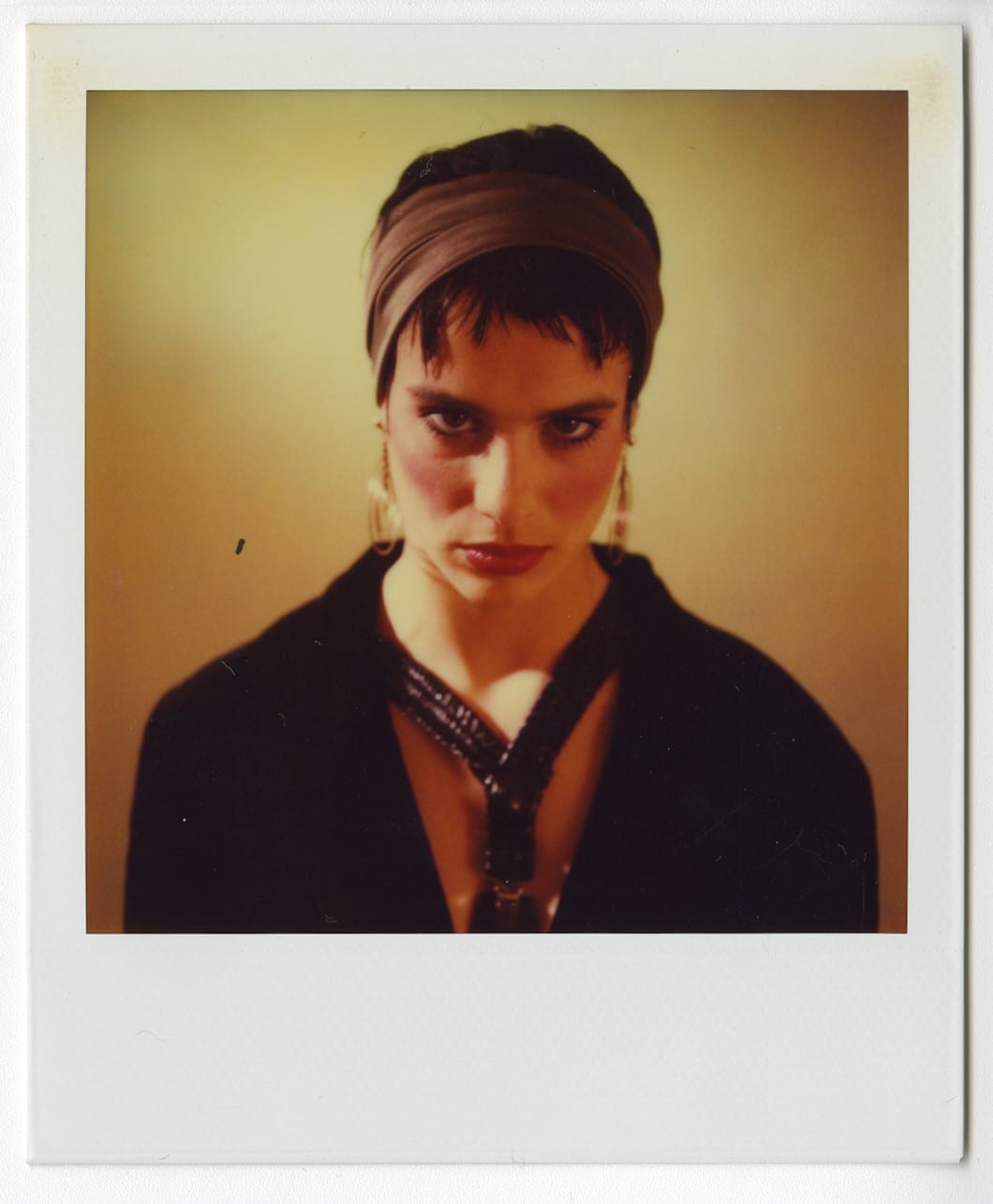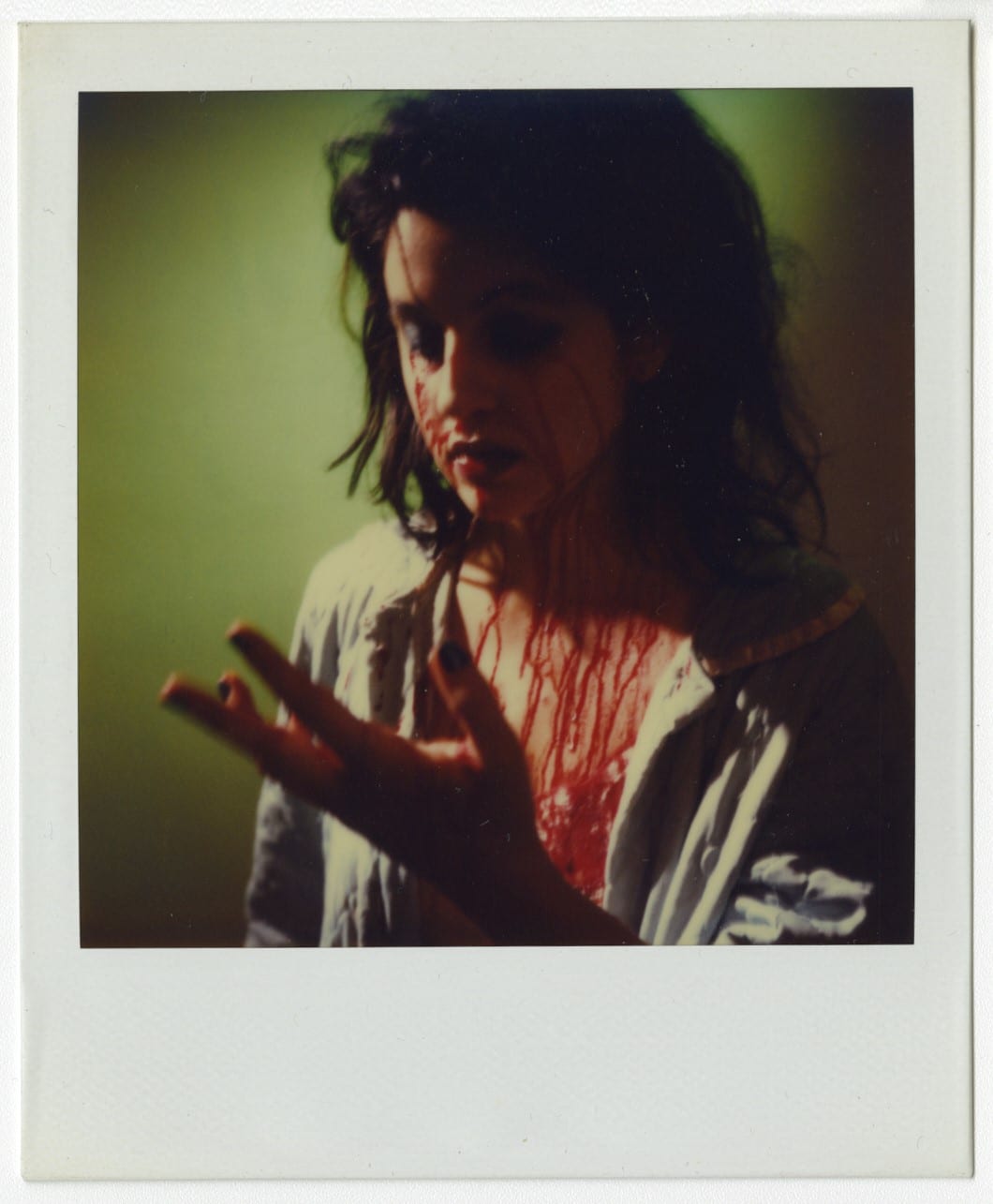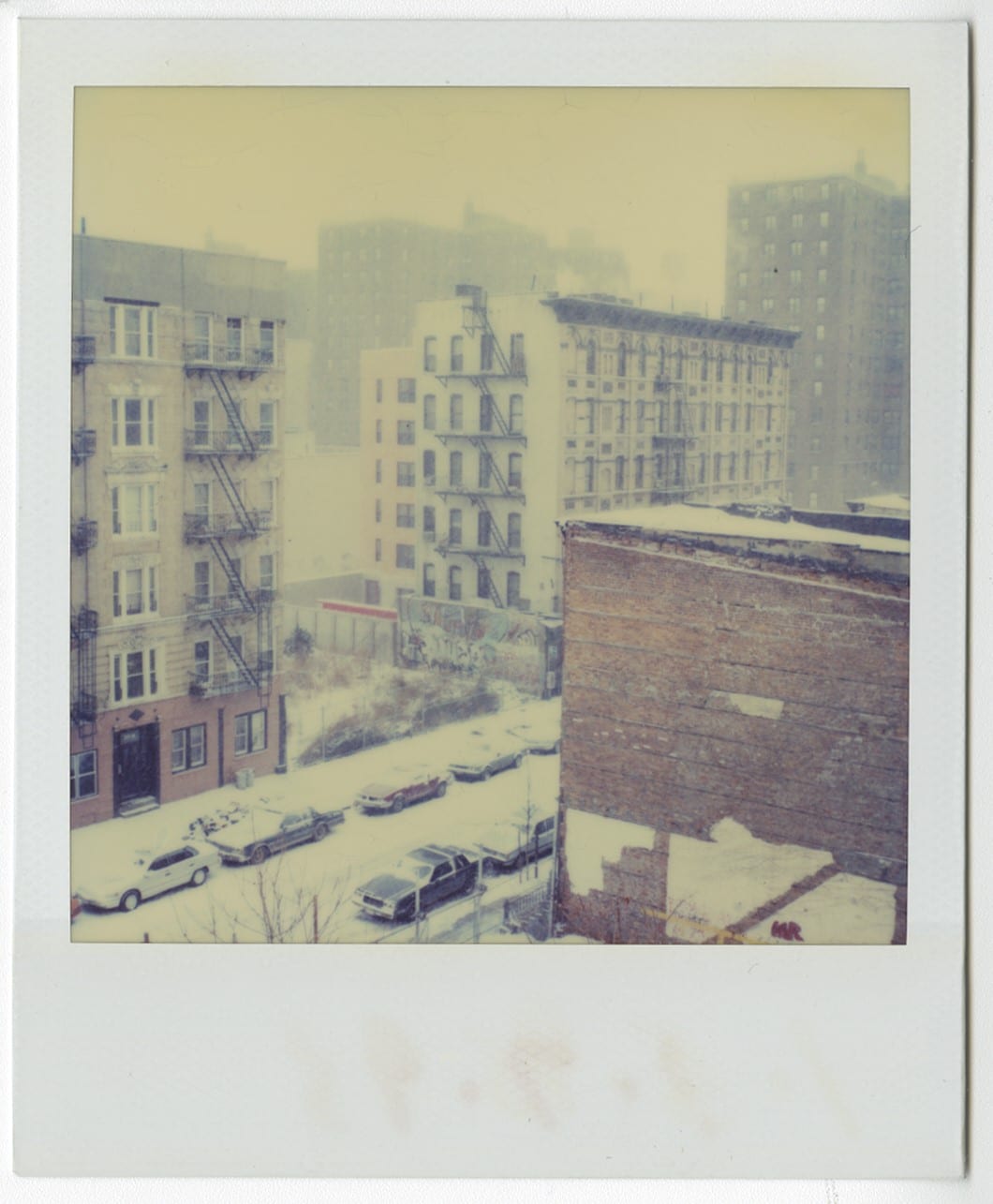
@ Richard Kern
“I also had a lot of trouble with screenings of FINGERED on one tour (1986) through Europe. Male feminists shut down several screenings in Germany based on their advance perception of a movie that no one had seen”.
Richard Kern is known these days for his images of nude or lightly clad images of nymphettes in various stages of undress or postured sexual congress. However, Kern’s major contribution to the annals of late twentieth-century art are indebted to the cinematic, notably as one of the main agents of the Cinema of Transgression. The COT was a small, nearly secularized movement in New York City during the 1980’s and 1990’s. The active members were film-makers, musicians and artists who wanted to explore the themes of taboo and rebellion against the often stifling morality of God Fearing Christian America. Termed “The Cinema of Transgression” by film-maker Nick Zedd, its loose affiliation of artists included Sonic Youth, Lydia Lunch, Tommy Turner, Lung Leg, Zedd, Kern and David Wojnarowicz. The Cinema of Transgression is characterized by a very specific time and place in New York when the lower east side, hells kitchen, and the long walk home from a night out was perhaps different than its overly sanitized and capital induced version of today. This time and place had a seething potential of danger, which bred infinite possibilities and a chokehold moral discourse for which to rebel against. The aids epidemic, Reganism, Tele-evangelical America and the rank tides of conformity created a maelstorm in which Kern and the others would find their voices against the sea of homegeniety.
Fortnight Institute in New York will be hosting a selection of Kern’s Polaroid work from the time succinctly entitled “Polarized” in September. The works on display are akin to musical notes from the period of the Cinema of Transgression and could be likened to a opening biographical Film score of the era if one existed. The works are different from the images that Kern currently produces and have a particular sense of nostalgia about them, even if the images depict people covered in blood, some sexualized gun play and the odds and ends of cultural detritus swept up into glorified and transformed innuendos of rebellion and youthful anger. The archival impulse and visionary agenda of showing these works at Fortnight Institute is a graceful salutation to Kern’s important career. Looking into the history of the artist, Fortnight have grasped the uncanny and the arcane within and have again proven themselves trailblazers at looking past the trends of current and over-hyped art world currency by producing a show of considering the historical paradigm of an important auteur.
On a personal note, I had found Kern’s “New York Girls” very early in my own development. I remember having to order a copy of the book at a Barnes and Noble in Wisconsin, the land of Dahmer and Ed Gein. Upon arriving to pick that and “Body and Soul” up by Andres Serrano in 1996, I remember both books were behind the counter and their covers wrapped in white printing paper. It was as if the covers alone could contaminate the other orders on the shelf. There was a moment of prideful reflection of my burgeoning taste.
BF: A Lot has changed since the 80’s and 90’s, the moral panic that infiltrated American society, in particular within the arts with responses to grants and the NEA being nearly destroyed overnight had led to what is still considered the “culture wars” in America. Your work in those days was focused not only on the body as conduit for implicit terror, but there was also an adage perhaps to Antonin Artaud or the Vienna Aktionists- an abject theater of the absurd. Have things changed considerably within the discourse of American morality since?
RK: I think the policing of American morality has now shifted from the government to social media. It seems that we are entering a new era in which everyone will be afraid to speak freely because they will face heavy attacks from often misinformed social media trolls.
I’ve heard some amazing stories from 20 year olds in which they made a random remark on a platform that stirs up a firestorm among their “friends” or followers. It’s happened to me and I’m 61.
I never applied for the NEA or anything like that so the disappearance of those institutions has no effect on me.
“If anything the entire movement (my films at least) was anti-sex or about how sexual desire and relationships fuck up everything.”
BF: Do you think the cinema of transgression still has a current and contemporary platform outside of nostalgia or can we consider it predominantly of a very specific time and place, notably New York in the 80s and early 90s? My own inclination is with the advance of pornography’s distribution via the Internet, that most of what was taboo is now becoming something more streamlined or commonplace…
RK: For me the COT happened at a very specific time and place and that would be around 1983-1990 in NYC.
Don’t make the mistake of thinking that the COT had anything to do with pornography. If anything the entire movement (my films at least) was anti-sex or about how sexual desire and relationships fuck up everything.
BF: That was not my intent, but rather to speak about some of the obvious contemporary taboos being transgressed via Internet saturation and the common rabbit holes thereof.
I’ve been reading quite a bit about the “Satanic Panic” epidemic in America…the West Memphis Three, Ricky Kasso, and Richard Ramirez…I know Wojnarowicz had played with these ideas in his film with Tommy Turner “Where evil Dwells”, and when I look at some of your polaroids and some of the early imagery associated with the “scene” you were involved in…I see links to fighting against spirituality, the body, sex, voyeurism, orthodox religion and the moral crusading of Reganism in America, followed up by Tipper Gore’s PMRC in music…did any of this affect you personally? Did you find any inspiration in the insipid transference of American fundamentalism at the time as it related to your work?
RK: The Satan headlines era and the PMRC were both amusing in that people took all that stuff so seriously at the time. I didn’t deal with those topics so much and neither did David Wojnarowitz -” Where Evil Dwells” and “Simonland” (a film inspired by the PMRC) came from the brain of Tommy Turner. He also put out a fanzine called REDRUM that focused on all that stuff.
My scene was so small that no one in the government really paid attention to anything we were doing. The only police encounter I had was with Canadian Customs. Around 1991 they seized one of my tapes at the border because they thought it contained kiddie porn (the woman in question was 30 years old). Some friends of mine in Europe told me they had been picked up by the police and questioned about my activities. I guess my mail was being monitored etc. Of course this scared the hell out of me and prompted me to get proof of age and model releases from everyone I had ever worked with. I still get releases and proof of age from everyone I work with.
I also had a lot of trouble with screenings of FINGERED on one tour (1986) through Europe. Male feminists shut down several screenings in Germany based on their advance perception of a movie that no one had seen. And the first film I made, “Goodbye 42nd Street” wasn’t allowed to be shown in an open screening at an alternative arts organization here in 1983 (ABC No RIO) because it “promoted the wrong values”. There were lots of these kinds of incidents.

@ Richard Kern
“My site was a provocative eye fuck and was featured in the NY Post’s business section as the kind of new weird stuff to be found when ‘surfing the internet’.”
BF: Zine culture and the 90’s, I remember Jim Goad’s “Answer Me” blowing my mind and also reading through the RE/Search books looking for anything Boyd Rice had to say that didn’t involve his limited appeal to social Darwinists. I grew up in the 90s…I miss things like the ethos of zine culture, maximum rock n roll, DIY vibes, in a world completely connected with social media, and web publishing, do you have any ideas why this culture seems to have died out or has it simply transformed onto the web?
RK: There’s still tons of those zines and mags now at the book fairs. It seems that now the intent is often to create a piece of collectable book art that will acquire value in the future. This is very different from making zines in the old days. But yes, no one needs zines if they have the Internet.
My first website went up around 1995 and was designed by a guy named Eric Swenson. Eric was one of the producers of a CD Rom mag called BLAM!, an insanely extreme underground art mag that came out on now obsolete media between 1993-1998.
My site was a provocative eye fuck and was featured in the NY Post’s business section as the kind of new weird stuff to be found when “surfing the internet”.
The reason I bring this up, is that 10 years later, Eric sent me a ghost link he had found to one of the versions of this old site that had somehow survived on my old internet provider’s servers long after I had moved my domain elsewhere. It was mind-blowing for me to see what my old site looked like – it was crude, vulgar and trippy. I have no “copies” or documentation of the way those old sites looked, worked or operated. What I’m saying is that I think all those old sites were like the DIY underground mags you miss. I’d like to have the ability to see my old sites, but all that digital stuff was even more disposable than paper zines.
BF: Fortnight Institute is a great venue for showing ephemeral or work such as collage and also books. I look on their efforts as a great venture filled with interesting material, which is rare these days. I think it is fantastic that they managed to speak with you about exhibiting, let alone showing work from your own important history as it relates to the 80’s an 90’s. Seeing the slides from 1977, your earthwork is something unexpected. How did they manage to coax the material out from your archive? I would have thought that the works, though important to your personal history, had been left unexamined for some time…can you tell me how “Polarized” came about?
RK: I did a show of 12 old, pre-girl photos (from 1980-1990) organized by Leo Fitzpatrick at Marlborough Chelsea last year. Fortnight didn’t exist yet but they told me they were planning to open and since Fabiola and Jane (the owners of Fortnight) both come from archivist backgrounds, they wanted to do a show with old material too. I told them about the Polaroids and they decided to show them.

@ Richard Kern
“I wouldn’t say that all these people were close knit, I would say that the different scenes touched here and there because each scene had holes that they needed people from other scenes to fill”.
BF: Lydia Lunch, Nick Zedd, Sonic Youth, you had a quite wide group of influential people that you were working with, though I suspect back then the group was closer knit, maybe hanging at the mud club or wherever…did music inform a lot of you imagery at the time or was it mostly cinematic references or literature?
RK: Ha Ha I never went to the Mudd Club. I wouldn’t say that all these people were close knit, I would say that the different scenes touched here and there because each scene had holes that they needed people from other scenes to fill. I met Lydia because David Wojnarowitz told her about some nude bloody performance stuff that I did with Brian Moran. She needed someone to round out a bunch of nights she had booked at the Pyramid and asked us to fill in. She found out I made films and we started working on “THE RIGHT SIDE OF MY BRAIN”. I met Sonic Youth because they needed someone to make them look dead (as a reference to the Manson Family murder of Sharon Tate) for their video Death Valley 69. I ended up co-directing the vid with Judith Barry. I met the Butthole Surfers cause I helped them find some LSD when they came to town. I asked them if I could use some music. ETC.
BF: One thing I am interested in personally is if you have any tales of David Wojnarowicz that you could let us in all, any relevant moments or personal adages, histories, or thoughts on one the most important artists of the time? I still find his work under rated and co-opted one-dimensionally into the struggle of the aids epidemic, when I see it as much more than this….
RK: I just did a long long interview about him for his archives so I’m gonna pass on this one….
BF: New York seems, like most capital cities…Berlin, London Etc…to be well on their way, if not already there, of becoming pastiches of their former selves…the underground current and energy being replaced by a wave of sanitary capitalist construct and wall street type suits or even when there is a “sub-culture” present these days…as say in…Berlin…there becomes a formula present…Do you see anywhere out there vaguely resembling the NYC you pushed through in the 80’s and 90’s?
RK: Yes. Since I work with a lot of youngsters, I get glimpses of scenes that I’m sure in 20-30 years those people will be looking back at and saying “those were the good old days”
“I suppose I get inspiration from the never-ending river of talent I keep encountering via social media – People that are doing spur of the moment and disposable projects that make the regular art world seem dull and sluggish by comparison.”
BF: I interviewed BP Laval, a painter whom also works with Fortnight Institute where your Polaroids will be shown, I asked him about inspiration, where he finds it and his passionate response was that is was to find inspiration wherever and in whatever “turned his crank”…the words have stuck with me in many instances since…so…”what turns your crank these days”…do you find inspiration outside of skinny geeky cheeky post-European looking girls? Do you return to the more transgressive nature of your work on occasion and do you consider your work transgressive at all, anymore?
RK: I don’t consider myself transgressive although I’ve been trying to get this film project that is in that vein rolling for 2 years. What’s harder than being transgressive is finding a way to do something original that’s not just some art world #Ifoundanewmedium gimmick.
I suppose I get inspiration from the never-ending river of talent I keep encountering via social media – People that are doing spur of the moment and disposable projects that make the regular art world seem dull and sluggish by comparison.
RICHARD KERN
Polarized
September 9 – October 9, 2016
(All rights reserved. Text @ Brad Feuerhelm and ASX. Images @ Richard Kern and courtesy of Fortnight Institute.)








